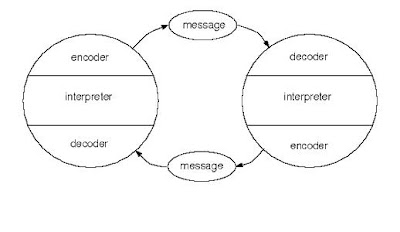As Communication is the base for what ever we do, we would not be able to do even the everyday things that we do on a daily basis. When it comes to the work world, whether it’s a small family run company, or a giant
corporation, communication is the only way to run a business smoothly. Without effective communication, messages can get mixed, and information can be skewed. I think that everyone should learn about these models and about effective ways to communicate, because it doesn’t matter where you are, or what you are doing, communication is a constant part of everyone’s lives.
Many authors and researchers divide communication by what they sometimes called "contexts" or "levels", but which more often represent institutional histories. There are many different views on every communication theory, but there are different views given by different Theorists regarding communication theory. The few important theorist of communication theory are
- Harold Lasswell
- Wilbur Schramm
- Claude Shannon
- Bruce Westley & Malcolm MacLean
- Lawrence Kincaid
HARLOD LASSWELL defines communication has
"who says what to whom in what channel with what effect,"

WILBUR SCHRAMM has given a model on communication theory in 1954

Schramm’s Model
Wilbur Schramm (1954) was one of the first to alter the mathematical model of Shannon and Weaver. He conceived of decoding and encoding as activities maintained simultaneously by sender and receiver; he also made provisions for a two-way interchange of messages. Notice also the inclusion of an “interpreter” as an abstract representation of the problem of meaning.
Classical Communication Models
1. Aristotle’s definition of rhetoric. Ehninger, Gronbeck and Monroe: One of the earliest definitions of communication came from the Greek philosopher-teacher Aristotle (384-322 B.C.).
- “Rhetoric” is “the faculty of observing in any given case the available means of persuasion” (Rhetoric 1335b).
- Aristotle’s speaker-centered model received perhaps its fullest development in the hands of Roman educator Quintilian (ca. 35-95 A.D.), whose Institutio Oratoria was filled with advice on the full training of a “good” speaker-statesman.

These are various communication theories explained by different people. Harold Lasswell explained the communication model in 1948. He explained the model by “who says what to whom in what channel with what effect”. Shannon & Weaver’s model was introduced in 1949. They are known as the fathers of information theories and they have focused on the noise source in communication. Schramm’s first model was introduced in 1954 and focused on signal. He has also introduced the second model with field of experience. He has also introduced the third model with feedback. He was known as the founder of information studies. Katz and Lazarsfeld’s model was introduced in 1955. It was the first model to deal with mass media and communication. The Westley-Maclean model was introduced with mass media and communication in organization. At last, Kincaid’s convergence model was introduced in1979 and included mutual understanding. It is a cyclic model. All of these models are very useful in organization. These models are useful to offer convenient ways to think, to provide graphical checklists and to change to mass communications methods.
REFERENCE
http://en.wikipedia.org/wiki/Communication_theory#Communication_Theory_Framework
http://www.tcw.utwente.nl/theorieenoverzicht/
http://www.shkaminski.com/Classes/Handouts/Communication%20Models.htm
No comments:
Post a Comment